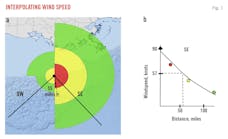Paula Dittrick
OGJ Senior Staff Writer
HOUSTON, Sept. 3 -- BP PLC, operator of the Macondo well, removed the failed Deepwater Horizon blowout preventer on Sept. 3 and started to slowly lift it through 5,000 ft of water in the Gulf of Mexico to the Helix Q4000 multiservice vessel.
“We will continue to closely monitor progress as the BOP, which along with the latching device weighs approximately 1 million lb, is lifted to the surface in the next 24-36 hr,” said National Incident Commander and retired US Coast Guard Adm. Thad Allen at about 2:30 p.m. CDT on Sept. 3.
Plans call for a BOP from Transocean Ltd.’s Development Driller II semisubmersible to replace the failed Deepwater Horizon BOP before crews finish drilling a relief well using the Development Driller III semi. An Apr. 20 blowout of the Macondo well resulted in an explosion and fire to the Deepwater Horizon semi, killing 11 people. The Deepwater Horizon sank on Apr. 22, and an oil spill resulted.
Allen said a stronger BOP needs to be in place before the relief well is completed to kill the well from the bottom. Crew already pumped mud and cement into the top of the Macondo well during a “static kill” procedure.
Some cement from the static kill went into the reservoir, which put the well into a static condition and enabled crews to replace the BOP. Previously, BP removed a capping stack from the top of the Deepwater Horizon BOP. The capping stack was installed on July 15, halting the flow of oil and gas from the well.
The DDII will lower the replacement BOP onto the Macondo well, and then the BOP will be tested before relief well drilling resumes using the DDIII, Allen said. BP estimates the relief well will intercept the Macondo well in mid-September.
Contact Paula Dittrick at [email protected].
